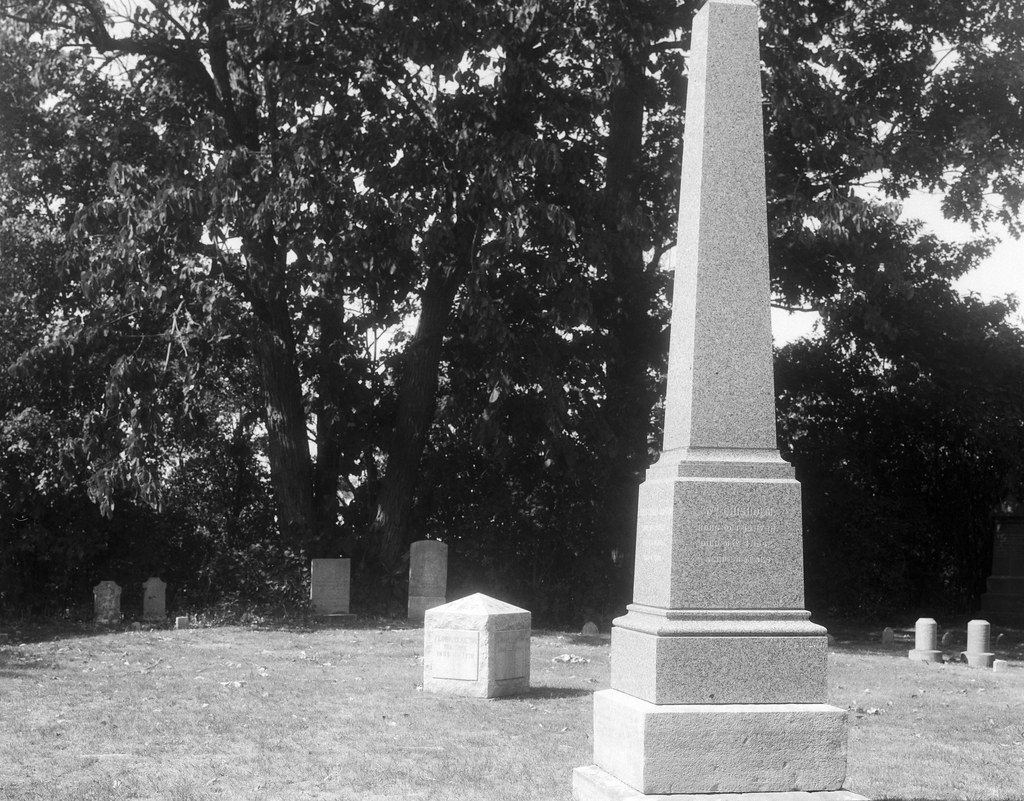If there is a first family for Oakville, that family is the Chisholms. You cannot mention the founding of Oakville without having the Chisholms in the same breath. And the family is directly tied to the history of Oakville from its founding into the middle of the 20th Century.

Born to a loyalist family in Nova Scotia, William and his family moved to the township of Nelson in 1793, near the modern city of Burlington. As the son of a land owner, William received an Ensign commission in the 2nd Battalion, York Militia. During the Anglo-American War of 1812, he saw combat at the Capture of Fort Detroit and the Battle of Queenston Heights. He was promoted to lieutenant, and when the District of Gore was created, he gained a Captaincy in the newly formed Gore Militia. William and his wife, Elizabeth, purchased a plot in Nelson Township in 1816, but not being a farmer, William constructed a general store and tavern along Dundas Road. He quickly fell in with a growing reform movement in Upper Canada, supporting Robert Gourlay and acting as an agent for the Colonial Advocate, the newspaper of William Lyon MacKenzie. He successfully ran for a seat in the Legislative Assembly as a representative for Halton County as a part of the Reform movement. But he soon found his advancement stalled; he submitted several petitions to develop the area around the mouth of the Sixteen Mile Creek when it was coming up for purchase. His requests were ignored and passed over by the elite group of men, the Family Compact, who controlled the real power in Upper Canada. His connections to MacKenzie and Gourlay made him a bit of an outcast. William quickly cut ties to the reform movement in 1824 and began to make inroads with the Family Compact. While he was never a member of the inner circle (despite MacKenzie naming him on his black list), he certainly threw his support behind Tory candidates. But patronage soon followed, promotion came within the militia, appointments to key roles in the township, and, more importantly, acceptance of his proposal for the Treaty 22 purchase of the areas around the Sixteen Mile Creek mouth in 1827. William purchased the entire land reserve, mortgaging his entire land holdings in Nelson. He sent his son Robert and son-in-law Merrick Thomas to survey a townsite and made plans to construct a harbour and shipyard using the creek mouth. William arranged for the construction of the shipyard, a store, two mills, and a tavern. William would repay his debts in 1831 but was forced to sell off his Nelson holdings and move to Oakville in 1839. And while his ventures in Oakville proved successful, a plan to improve water power on the Sixteen Mile Creek failed, and in 1842, he was forced to liquidate all his holdings to repay debts. William died in May 1842, almost destitute. William’s eldest son, George Kerr, born in 1814, would carry on as head of the family. George made a name for himself outside of Oakville, serving in the militia and later as sergeant-at-arms for the Provincial Parliament in Montreal. He was present during the riots of 1848 following the passage of several bills clearing the rebels’ names during the previous decade’s rebellions. He resigned due to injuries and returned with his wife to Oakville in 1849. Here George and his wife became involved in the local community, sitting on the school board, establishing the local lodge of the Free Masons and helping with the governance of the Trafalgar township. In 1855, George was commissioned as a major of the locally created militia company in Halton County. George was elected the first mayor when Oakville was incorporated as a town in 1857. In 1866 he became lieutenant colonel commanding the 20th Halton Battalion of Infantry (today the Lorne Scots). George would pass in 1874. His younger brother, Robert, born in 1819, would stay close to home. Taking over as customs agent and postmaster for Oakville after his father’s death and inherited the family home. In 1858 he expanded the home, giving it the name Earchless and completed a grand customs house. Robert served as the reeve of Trafalgar Township, sat on the town council in 1857 and was elected mayor in 1866. Robert would die in 1899, passing on the estate to his son Allan. Allan was content to stay at the estate and improve the landscape. The last Chisholm to leave an impact was Hazel Chisholm, born in 1897 and Emelda Chisholm’s daughter (Allan’s cousin). Hazel would spend her childhood in Oakville and eventually turn the old customs house into an apartment; she discovered a wealth of family documents which helped form the Oakville Historical Society. Hazel and her sister would be the last Chisholms to live at the estate; she passed away in 1978.
There are no statues or memorials to the Chisholm family in Oakville. A Provincial Historical plaque is present, but it does little to tell the family’s story. Thankfully, I discovered the family plot for the Chisholm Family in the Oakville Pioneer and St. Mary’s Catholic Cemetary. Focusing on the new memorial for William’s mortal remains, I used my 180mm lens to get close and a shallow depth of field to isolate the marker from the cluster of gravestones in the background. Metering off the highlights, to catch the most details in the hard light, I wanted to ensure that William’s name was visible. While not perfect, it is an okay shot.